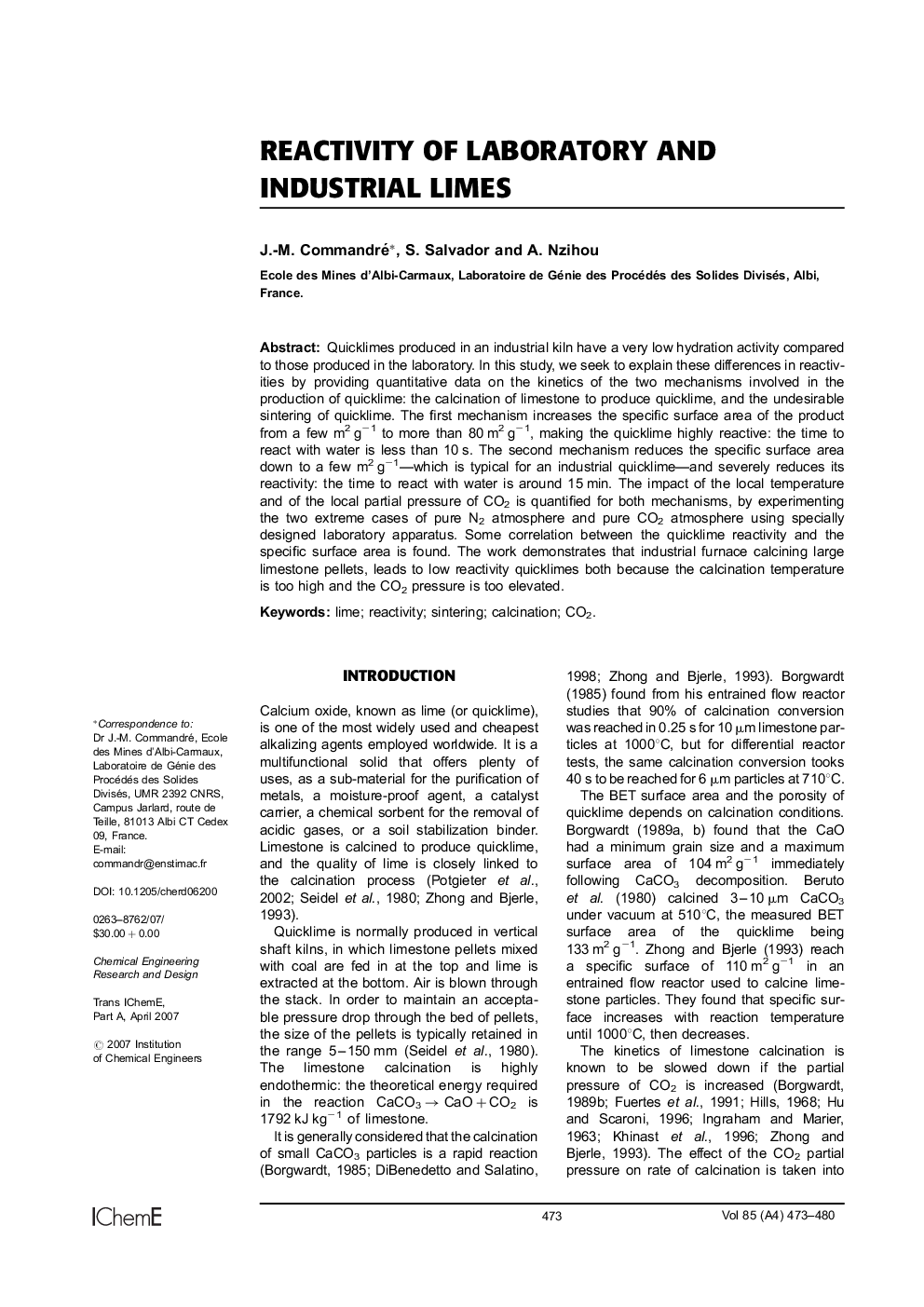| Article ID | Journal | Published Year | Pages | File Type |
|---|---|---|---|---|
| 622078 | Chemical Engineering Research and Design | 2007 | 8 Pages |
Quicklimes produced in an industrial kiln have a very low hydration activity compared to those produced in the laboratory. In this study, we seek to explain these differences in reactivities by providing quantitative data on the kinetics of the two mechanisms involved in the production of quicklime: the calcination of limestone to produce quicklime, and the undesirable sintering of quicklime. The first mechanism increases the specific surface area of the product from a few m2g−1 to more than 80 m2 g−1, making the quicklime highly reactive: the time to react with water is less than 10 s. The second mechanism reduces the specific surface area down to a few m2 g−1—which is typical for an industrial quicklime—and severely reduces its reactivity: the time to react with water is around 15 min. The impact of the local temperature and of the local partial pressure of CO2 is quantified for both mechanisms, by experimenting the two extreme cases of pure N2 atmosphere and pure CO2 atmosphere using specially designed laboratory apparatus. Some correlation between the quicklime reactivity and the specific surface area is found. The work demonstrates that industrial furnace calcining large limestone pellets, leads to low reactivity quicklimes both because the calcination temperature is too high and the CO2 pressure is too elevated.
